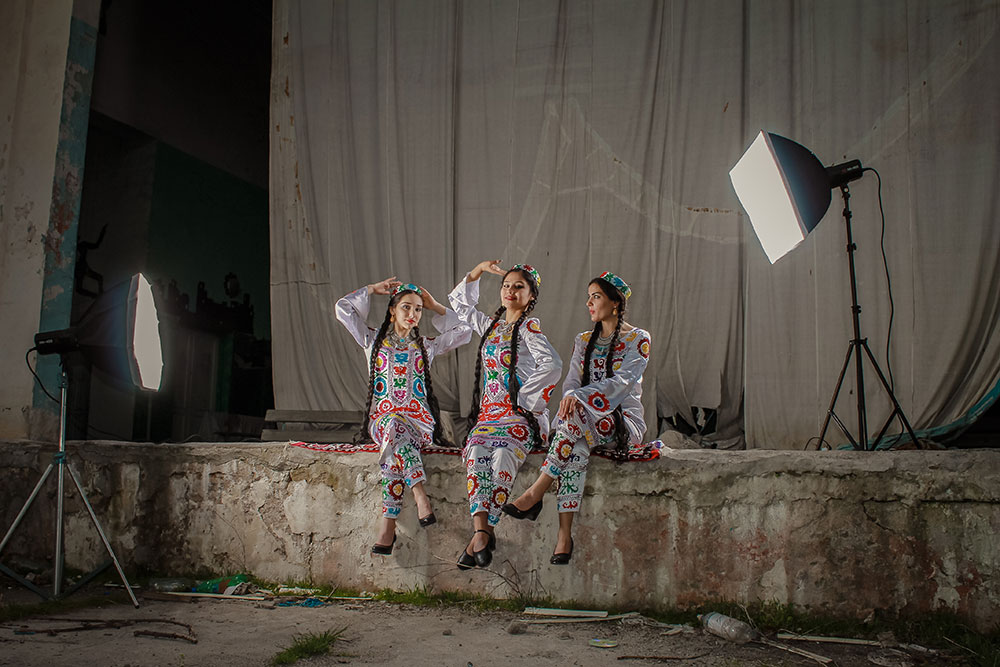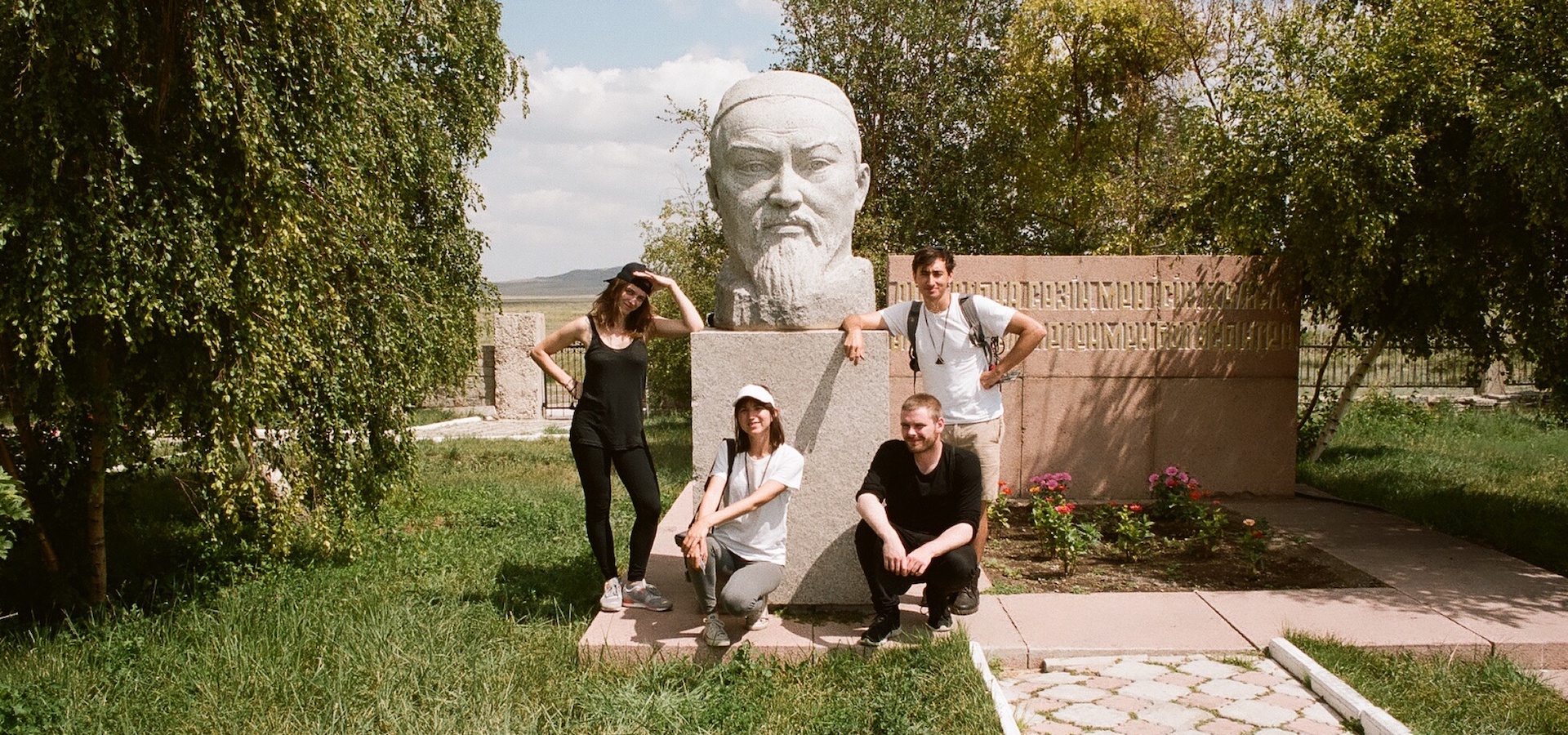Meet the woman fighting to create a new wave of DIY filmmaking in Tajikistan
Since the end of its bitter civil war in 1997, Tajikistan has witnessed a creative exodus. Economic stagnation, rising authoritarianism, cultural conservatism, and isolation from global dialogue have forced the majority of the country’s best and brightest outside of its borders. Anisa Sabiri is determined to reverse the trend — and she has hit upon a DIY approach to cinema that allows her to sidestep the strictures of official culture. Following a career as an award-winning writer and journalist, Sabiri studied with German master cameraman Fred Kelemen, before taking her short The Crying of Tanbur to international festivals. Her latest venture is her most ambitious: with the support of the British Embassy, she has founded My Vision — an experimental residency that invites young, first-time filmmakers to work with professionals to turn out short films in a few weeks. The results were hugely popular when screened in the Tajik capital Dushanbe, and Sabiri is now looking to the future. She told The Calvert Journal about the obstacles to creative vision in Tajikistan and the future of independent Central Asian cinema.
Still from My Vision film Hope (dir. Diloshub Orifzoda)
Even five years ago, creativity in Tajikistan still bore the smell of formaldehyde and elitism. They did everything they can here to turn young people off culture. Ideological pressure from above and the low level of education in general was rendering an entire generation creatively impotent. It’s cultural degradation. When I came back to Dushanbe in 2014 after studying in Moscow, I saw that my friends had great artistic potential but no access to public self-expression. We began holding literary salons in jazz clubs, photo shows in nightclubs, traditional music shows accompanied by ballet dancing in public places where kids hang out at night. People of all different ages showed up, and these events were packed: Dushanbe might be the capital, but it’s suffering from a cultural famine.
Passivity is not conducive to creativity. With time, I understood that cinema, more than other forms of art, was able to “equip” society for self-reflection. There was no film school in Tajikistan and studying abroad is too expensive for young people. I realised that what Tajikistan needed was a place where students could search for their own film language, find the master within themselves, like a Sufi mystic — but arrive at this point through practical work with industry professionals. After I finished working on my short film debut, The Crying of Tanbur, I met with the British ambassador in Tajikistan, Hugh Philpott, who supported our project: the Dushanbe Experimental Cinema Residency My Vision. We got to work on making it a reality.
Still from My Vision film Circle (dir. Bekhrooz Davlyatbekov)
We had an incredibly tight, almost impossible schedule: three months of preparation, starting from zero. We received 56 submissions from across the republics, from which we selected the eight bravest and most unusual projects. For three long, hot weeks, 17 film professionals from Tajikistan, Russia, Uzbekistan, and Kazakhstan helped us, working on the scripts. Each of them came with their own cinematographic stance, which helped our kids to decide on how they wanted to go about making their films. After these workshops we distributed up to $1,000 per film and began shooting. We ended up with seven short films — one experimental, three documentary, and three fictional.
Like any other visual culture in Tajikistan, it will be very difficult to raise the level of cinema without material support. There’s no infrastructure or film education; combined with the very low level of education in general, this has a serious impact on freedom of self-expression. In the first instance, the aim of our project was to create a biosphere and to allow for the evolution of microorganisms within it. To make any considerable advances, we’d need an enormous programme with dedicated funding and, more importantly, personnel.
Still from My Vision film Hope (dir. Diloshub Orifzoda)
In an epoch of artistic crisis, if we want things to change then our initial response should be to engage our viewers. We made a big effort to create space for these films to be shown. We picked popular locations, and despite the fact that there’s a stereotype here that Tajik cinema is uninteresting, the screenings were full, we had requests to show some films twice, and many public spaces offered to put on additional showings. I think the interest came from the fact that the documentary films that were made touched upon what are pretty sensitive themes for a country like Tajikistan: the lives of gypsy girls or homeless youths in the capital, problems with water shortages, cybercrime, the government’s demolition of Soviet-era architecture, the unfeasibility of traditional family values in the modern world. In Tajikistan, the artificiality of art can still veil things in metaphor — but in documentaries that’s practically impossible, everything is in your face.
There’s no way of creating something lasting and creative under local financial conditions. We need to work within our countries to create a body of Central Asian activists which we then plug in to international networks. We have no other choice. At the same time, more and more interesting and independent projects are emerging in Central Asia — Clique and Go Viral festivals, for instance, as well as what we might call “spaces” for people yearning for room to breathe. If these kinds of spaces begin to coordinate with one another across national borders, then that will represent a real force, the kind of thing that can act independently of the threats of totalitarianism.


